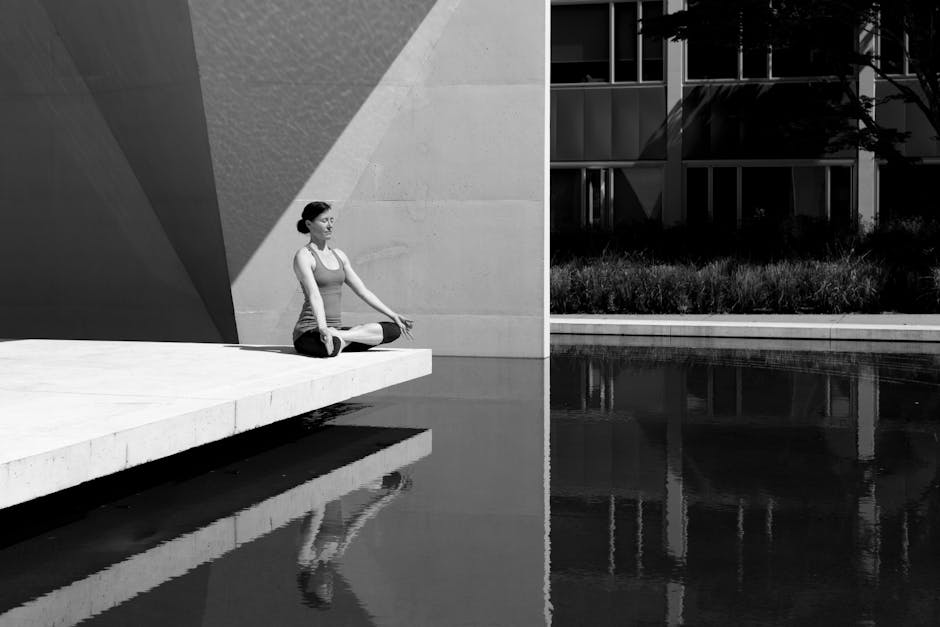Unlocking Inner Peace Through Mindful Practices
Inner peace, that elusive state of tranquility and serenity, is a sought-after goal for many. It’s not a destination, but rather a journey, a continuous process of cultivating a balanced and harmonious inner landscape. While life inevitably throws challenges our way, mindful practices offer powerful tools to navigate these storms with greater equanimity and resilience. These practices aren’t about suppressing emotions or escaping reality; instead, they empower us to engage with our experiences with greater awareness and acceptance.
Mindfulness Meditation: The Foundation of Inner Peace
Mindfulness meditation forms the bedrock of many inner peace practices. It involves focusing your attention on the present moment without judgment. This might involve observing your breath, body sensations, sounds, or thoughts. The key is to acknowledge these experiences without getting carried away by them. When your mind wanders – and it inevitably will – gently guide it back to your chosen focus point. Regular practice, even for just a few minutes each day, can significantly reduce stress, improve focus, and cultivate a sense of calm. Guided meditations, available through apps like Headspace and Calm, can be particularly helpful for beginners. Finding a quiet space, comfortable posture, and consistent time each day can enhance the effectiveness of your practice. Experiment with different techniques to discover what resonates most with you.
Mindful Movement: Connecting Body and Mind
The connection between our physical and mental well-being is undeniable. Mindful movement practices like yoga, Tai Chi, and Qigong integrate physical postures with mindful awareness. These practices not only improve flexibility and strength but also cultivate a deeper connection with your body and its sensations. The focus on breath and movement helps to quiet the mind, reducing racing thoughts and promoting a sense of grounding. Yoga, in particular, combines physical postures (asanas) with breathwork (pranayama) and meditation, offering a holistic approach to cultivating inner peace. Tai Chi’s slow, flowing movements promote relaxation and balance, while Qigong emphasizes energy flow and mindful intention. Choose a practice that appeals to your preferences and physical capabilities.
Mindful Eating: Savor the Experience
Often, we eat while distracted, rushing through meals without paying attention to the taste, texture, or even the act of eating itself. Mindful eating encourages a conscious approach to nourishment, focusing on the present moment and appreciating the food you consume. This involves slowing down, savoring each bite, and paying attention to the sensations in your mouth and body. By eliminating distractions like screens and engaging all your senses, you cultivate a deeper appreciation for food and can improve digestion and reduce overeating. This practice extends beyond the physical act of eating; it fosters a mindful relationship with your body and its needs.
Mindful Communication: Speaking with Awareness
Our interactions with others significantly impact our inner peace. Mindful communication involves speaking and listening with intention and awareness. This includes being present in the conversation, actively listening without interrupting, and expressing yourself clearly and respectfully. It also involves pausing before responding, allowing yourself time to consider your words and their potential impact. By practicing active listening and compassionate communication, we can improve relationships, reduce conflict, and foster a sense of connection and understanding. This translates to less internal stress and a greater sense of harmony in your daily life.
Mindful Nature Connection: Finding Solace in the Outdoors
Nature offers a powerful antidote to the stress and chaos of modern life. Spending time outdoors, whether it’s a walk in the park, a hike in the mountains, or simply sitting under a tree, can have a profound impact on your mental and emotional well-being. Engage all your senses – observe the colors, textures, sounds, and smells of your surroundings. Notice the feeling of the sun on your skin, the breeze on your face, the earth beneath your feet. This connection with the natural world can be incredibly grounding and restorative, promoting feelings of peace, calm, and appreciation.
Cultivating Gratitude: A Positive Mindset Shift
Gratitude is a powerful emotion that can shift your perspective and foster inner peace. By consciously focusing on the positive aspects of your life, you cultivate an attitude of appreciation and contentment. Keeping a gratitude journal, expressing thanks to others, or simply taking a few moments each day to reflect on what you’re grateful for can significantly enhance your emotional well-being. This practice helps you shift your focus from what’s lacking to what you have, promoting a more positive and peaceful mindset.
Forgiveness: Letting Go of Resentment
Holding onto resentment and anger can be incredibly detrimental to your inner peace. Forgiveness, both of yourself and others, is a crucial step in releasing these negative emotions. Forgiveness doesn’t mean condoning harmful actions; it’s about releasing the burden of anger and resentment that prevents you from moving forward. This process may involve self-reflection, journaling, or seeking support from a therapist or counselor. The ultimate goal is to cultivate compassion for yourself and others, freeing yourself from the grip of negativity and fostering a sense of inner peace.
Self-Compassion: Treating Yourself with Kindness
Just as we would offer compassion and understanding to a friend struggling with difficulties, we need to extend the same kindness to ourselves. Self-compassion involves acknowledging your imperfections, accepting your feelings, and treating yourself with empathy. This involves practicing self-kindness, recognizing your shared humanity, and mindfulness of your suffering. Self-compassion helps to reduce self-criticism, boost self-esteem, and foster a sense of inner peace and acceptance.
Developing a Daily Practice:
Consistency is key to unlocking inner peace through mindful practices. Start small, incorporating one or two practices into your daily routine. Gradually increase the duration and frequency of your practice as you become more comfortable. Remember that it’s a journey, not a race, and there will be days when you struggle. Be patient with yourself, and celebrate your progress along the way. The ultimate goal is to integrate these practices into your lifestyle, creating a foundation of inner peace that sustains you through life’s challenges. Experiment, find what works for you and stay committed to the process. Your inner peace awaits.





